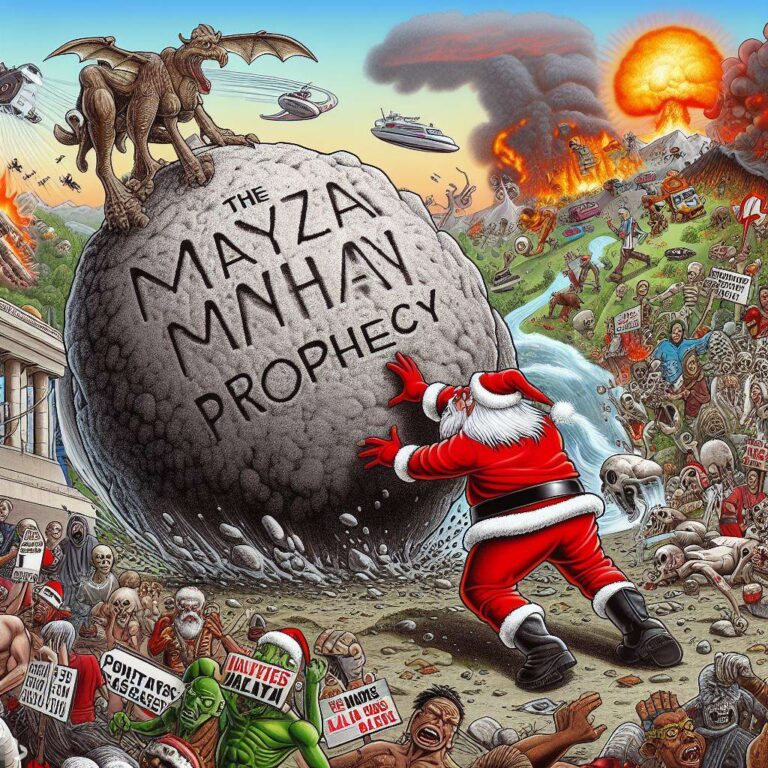The year 2023 is approaching, and with it, a date that has been feared by many people for decades: December 22, the end of the Mayan long count calendar. According to some interpretations of this ancient system of timekeeping, this date marks the end of a cycle of 5,125 years, and the beginning of a new era of transformation and renewal. But what if this date also signifies something more sinister? What if the Mayans predicted a disaster at Christmas that we have always ignored?
The Mayan civilization was one of the most advanced and sophisticated in the ancient world, flourishing in Mesoamerica from about 250 to 900 AD. They developed a complex writing system, a sophisticated mathematics and astronomy, and a rich and diverse culture. They also had a profound interest in time and its cycles, which they recorded in various calendars. The most famous of these is the long count calendar, which counts the days from a mythical creation date of August 11, 3114 BC. The long count calendar is composed of units called bʼakʼtuns, each consisting of 144,000 days or about 394 years. The current cycle of the long count calendar began on September 18, 1618 AD, and will end on December 22, 2023 AD. This date corresponds to the completion of the 13th bʼakʼtun, a number that had a special significance for the Mayans.
The Mayans believed that history was cyclical and that each cycle was governed by a different deity or aspect of creation. They also believed that each cycle ended with a cataclysmic event that destroyed the previous world and ushered in a new one. For example, according to some sources, the previous cycle ended with a great flood that wiped out humanity. The Mayans also left behind several prophecies that foretold the events that would occur at the end of each cycle. Some of these prophecies are recorded in inscriptions, such as those found at Tortuguero and La Corona, two archaeological sites in Mexico and Guatemala. These inscriptions mention the date of December 22, 2023 AD, and refer to the return or manifestation of a deity called Bolon Yokteʼ Kʼuh, whose name means “Nine-Support God”. However, the exact meaning and nature of this deity are unclear, as well as his role and intentions at the end of the cycle.
Some scholars and enthusiasts have interpreted the Mayan prophecies as predictions of a global catastrophe that will occur on December 22, 2023 AD. They have speculated that this date will coincide with various astronomical phenomena, such as a galactic alignment, a solar flare, a planetary alignment, or the appearance of a rogue planet called Nibiru or Planet X. They have also suggested that these phenomena will trigger various natural disasters, such as earthquakes, volcanoes, tsunamis, meteor impacts, or pole shifts. They have claimed that these events will cause widespread destruction and chaos on Earth, and possibly even the extinction of humanity.
However, other scholars and experts have dismissed these interpretations as unfounded and sensationalist. They have argued that there is no evidence that the Mayans intended to predict any specific event or disaster on December 22, 2023 AD. They have pointed out that the Mayan prophecies are vague and ambiguous, and that they can be interpreted in many different ways. They have also noted that the Mayan long count calendar does not end on December 22, 2023 AD, but simply resets to zero and starts a new cycle. They have explained that this date is not an end, but a transition or a renewal. They have compared it to other dates in other calendars, such as January 1 or December 31 in the Gregorian calendar.
Therefore, it is possible that December 22, 2023 AD will be just another day in human history, without any significant or extraordinary event. It is also possible that this date will mark a change in human consciousness or awareness, as some New Age movements have suggested. However, it is unlikely that this date will bring about a disaster at Christmas that we have always ignored. The Mayan prophecies are not reliable sources of information or prediction for our future. They are rather expressions of an ancient culture and worldview that are fascinating and intriguing to study and appreciate.

